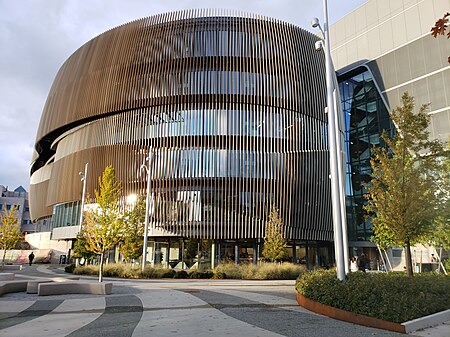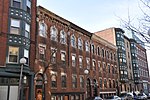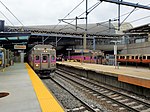Northeastern University (NU or NEU) is a private research university with its main campus in Boston. Established in 1898, the university offers undergraduate and graduate programs on its main campus as well as satellite campuses in Charlotte, North Carolina; Seattle, Washington; San Jose, California; Oakland, California; Portland, Maine; and Toronto and Vancouver in Canada. In 2019, Northeastern purchased the New College of the Humanities in London, England. The university's enrollment is approximately 19,000 undergraduate students and 8,600 graduate students. It is classified among "R1: Doctoral Universities – Very high research activity". Northeastern faculty and alumni include Nobel Prize laureates, Rhodes, Truman, and Marshall scholars. Undergraduate admission to the university is categorized as "most selective."Northeastern features a cooperative education program, more commonly known as "co-op," that integrates classroom study with professional experience and includes over 3,100 partners across all seven continents. The program has been a key part of Northeastern's curriculum of experiential learning for more than a hundred years and is one of the largest co-op/internship programs in the world. While not required for all academic disciplines, participation is nearly universal among undergraduate students. Northeastern also has a comprehensive study abroad program that spans more than 170 universities and colleges.Northeastern is a large, highly residential university. Most undergraduate students choose to live on campus but third-years and above have the option to live off campus. Seventy-eight percent of Northeastern students receive some form of financial aid. In the 2020–21 school year, the university has committed $355 million in grant and scholarship assistance. In 2019, Northeastern's six-year graduation rate was 89 percent.
The university's sports teams, the Northeastern Huskies, compete in NCAA Division I as members of the Colonial Athletic Association (CAA) in 18 varsity sports. The men's and women's hockey teams compete in Hockey East, while the men's and women's rowing teams compete in the Eastern Association of Rowing Colleges (EARC) and Eastern Association of Women's Rowing Colleges (EAWRC), respectively. Men's Track and Field has won the CAA back to back years in 2015 and 2016. In 2013, men's basketball won its first CAA regular season championship, men's soccer won the CAA title for the first time, and women's ice hockey won a record 16th Beanpot championship. The Northeastern men's hockey team won the 2018, 2019, and 2020 Beanpot, defeating Boston University, Boston College, and Harvard.








